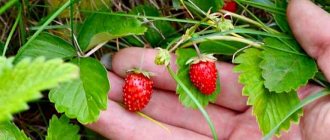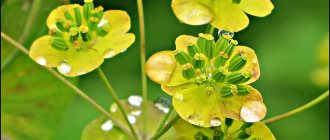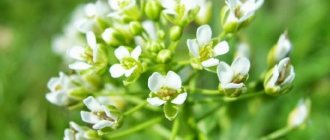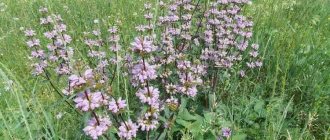Steelweed (lat. Ononis) is a genus of flowering plants. Belongs to the Motylkov subfamily and the Legume family. These are annual or perennial herbs, found in the form of shrubs and subshrubs. They can grow in whole groups or individual bushes.
In nature, there are from 70 to 75 different types of steelhead. The habitat is the northern and southern parts of Europe, as well as the Mediterranean strip. The plant extract is widely used in folk medicine. It has anti-inflammatory, diuretic, choleretic, homeostatic and analgesic properties.
Types of steelweed
Steelweed is not the most common plant in European latitudes. It grows in the forest-steppe zone of Russia and the Caucasus, and is rarely found in Siberia or Kazakhstan. A transitional form grows in Central Asia - the ancient steelweed.
The most common two types:
- field steelgrass (other names: spiny steelgrass, arable steelgrass, bull grass, wolf grass, plow holder, clay grass);
- ancient steel
Important! Stalnik (baranovichi) is a perennial plant with many species. According to various sources, the number ranges from 70 to 75, but only the properties of the listed two have been well studied.
Herbal remedy for hemorrhoids
Steelwort is often used as the main component in herbal preparations. The combination of several herbal components allows you to effectively influence even serious diseases.
Article for you:
Immortelle: medicinal properties and contraindications, collection, combination of herbs, use in folk medicine
For hemorrhoids, alternative medicine suggests using a mixture of herbs that actively copes with the main symptoms even in the presence of complications and advanced forms of the disease. Preparation:
- Combine steel grass (20 g), orchis tubers, woodruff, crow's feet, St. John's wort (10 g each).
- Steam the crushed plant ingredients with boiling water (500 ml).
- Leave for half an hour (wrapping the container in a towel will help increase the saturation of the homemade composition), strain.
Drink the prepared herbal medicine throughout the day. It is advisable to take the composition in small portions (no more than 50 ml). The taste of the healing liquid is quite unpleasant, but the use of additional ingredients (sugar, bee nectar) is prohibited - the effect on the disease will be significantly reduced.
It is recommended to treat hemorrhoids in courses. After a month of regular use of the herbal composition, take a break for 1-2 weeks and continue taking the home remedy.
Botanical description
Field steel grass is the most common type of this plant from the Legume family. It is a perennial shrub or subshrub. The length of the stem reaches 80 cm; its structure is semi-descending. The leaves are trifoliate and consist of small, toothed, oval-shaped leaflets.
The flowering period occurs in the summer - they are collected in the axils of the leaves, 2 pieces each. The inflorescences resemble spikelets in appearance. The plant will revert to honey plants. In the description of steelhead, botanists emphasize that its fruits are small - less than 1 cm in length. This bean contains about 2-4 seeds.
The root system is well developed and woody in structure. Many plants belonging to this genus are covered with glandular hairs. Flowers appear in pink, purple, yellow, and combinations of several shades may occur.
In the photo of the steelhead you can see its features in detail.
Habitat
Perennial shrubs or subshrubs grow singly or in large groups in meadows, as well as on river banks. The perennial plant lives in light pine forests, on forest edges, meadows, arable lands, near ditches, on the edges of swamps and on the outskirts of roads.
Prickly steelweed grows in the forest-steppe and steppe parts of the European part of Russia, as well as in the west of Ukraine. You can find a large number of bushes and subshrubs in the mountainous parts of Crimea and the North Caucasus. The plant is rarely found in Siberia, the Southern Urals or the Altai Territory.
Steel grass prefers areas where there are many sunny days a year. Grows on soils rich in chernozem and limestone.
Important! Since the plant is not widespread enough, its cultivated variety is used, which can be grown independently.
Contraindications to the use of steelweed, side effects
Stelnik is a plant that has an undeniable advantage over other herbs used in traditional medicine. Herbal remedies are practically safe, there are no contraindications. Herbal compositions can cause harm only if there is individual intolerance.
Article for you:
Water pepper: medicinal properties and contraindications
In order to prevent complications, it is recommended to monitor the body’s reaction after the first use of home remedies - the appearance of side effects should be the reason for stopping the course and using other alternative medicine.
In case of overdose, improper preparation of products, or errors in the use of herbal formulations, there is a risk of causing the development of side effects.
The body's main alarm signals are headaches, intestinal disorders (prolonged diarrhea), and unpleasant discomfort in the abdominal area. With increased sensitivity, attacks of nausea may occur, turning into severe vomiting.
Collection and preparation
Spiny steelweed is widely used in folk medicine. Roots of both wild and cultivated species are used. For harvesting, it is better to choose the autumn period - September or October.
The plant must be dug up completely, the roots must be cleared of soil, and the above-ground part must be cut off. Rinse the root system thoroughly in cold water. For 2 days, the roots of the steelweed are withered and then dried in special dryers at a temperature of 50 degrees.
The root system is very dense and hard in structure, having a cylindrical or angular shape. At the break, the color is closer to yellow or cream, the middle is fibrous. The smell is unpleasant and specific, the taste is sweetish, slightly viscous.
Important! It is recommended to sow seeds at the site of the dug plant.
Harvesting and storage of steel steel
Man has long noticed the medicinal properties of steelwort roots, widely using it in folk medicine. Neither sticky leaves, nor thorns, nor even the unpleasant smell repelled me from this plant. The roots begin to be harvested from the end of flowering - until the plant dries completely, that is, until late autumn. They are carefully dug out with a shovel, washed, and dried in well-ventilated areas. But direct rays of the sun are contraindicated. Therefore, it is better to dry in attics or under specially prepared canopies. This work is troublesome, since the roots are large, it is necessary to dry them thoroughly so that in the future they do not mold or deteriorate. Properly prepared raw materials can be stored and used for up to two years. But it is worth remembering that it easily absorbs moisture and can deteriorate. Therefore, it is necessary to systematically check the condition of raw materials. It should be noted that it is better to dig through one plant in order to use this amazing plant for medicinal purposes again next year.
Use in everyday life
The roots of the plant are used in folk medicine. But its above-ground part - leaves, flowers, stems - is widely used for dyeing fabrics. Infusions and decoctions from these parts allow you to dye fabric yellow and green. This property has long been noticed by people and is used in industry for the production of paint.
Stalnik is a honey plant. Therefore, it is desirable in the apiary area. It is often specially planted, propagated by digging up roots and dividing rhizomes. The steelhead is taking root well.
Medicinal properties
A large number of useful substances are concentrated in the root system of the bush. It is used to treat a wide range of diseases. Tinctures, decoctions are prepared from it, and are also used as a powder. Preparations based on this natural component have antimicrobial and anti-inflammatory effects.
The action is aimed at strengthening the walls of blood vessels, improving bowel function, relieving pain and stopping bleeding.
Field steelweed is used to treat the following diseases:
- constipation;
- hemorrhoids;
- urolithiasis;
- jade;
- rheumatism;
- chronic headache;
- thrombophlebitis;
- gout;
- epilepsy;
- phlebothrombosis;
- varicose veins;
- prostatitis;
- eczema;
- cystitis;
- furunculosis;
- acne.
The legume plant is also used in traditional medicine. Patients with such diseases are prescribed an alcohol tincture, which not only relieves symptoms, but also helps fight the causes of the disease.
Collection of plant materials, drying rules, storage features
The rhizome of the perennial is used to prepare medicinal compositions. It is recommended to go to harvest medicinal raw materials in the fall, before the first frost.
Remove the entire plant from the soil (it is advisable to do this with a shovel), cut off the above-ground part with a sharp pruner, shake off debris and pieces of earth from the roots. At home, rinse thoroughly with a stream of cold water, dry on sheets of paper or a soft cloth.
Cut the rhizome into small slices and place on baking sheets. It is recommended to dry under ventilated canopies. You should not dry plant materials in direct sunlight - the medicinal properties will be significantly reduced.
Article for you:
Comfrey: beneficial properties and contraindications, use in folk medicine and cosmetology
It is also recommended to use an oven or a special dryer for drying. The only caution is to avoid destruction of valuable compounds, monitor the temperature – up to 40 degrees.
Place the prepared rhizome particles in glass jars with sealed lids and food-grade plastic containers. When storing, avoid direct sunlight. Properly prepared plant materials do not lose their healing properties for two years.
If it is not possible to independently make a supply of a valuable herbal component for preparing home medicines, the rhizome of the herb can be purchased at a pharmacy. The cost of packaging (50 g) is from 120 rubles.
Use in folk medicine
Thanks to a wide range of useful micro- and macroelements in its composition, steelweed has medicinal properties. Tinctures, powders and decoctions can only be prepared from the roots; leaves and flowers are not used.
- Tincture
Alcohol tincture of arable steelweed is widely used to treat colds, gout, gastrointestinal diseases, diathesis, chronic headaches, and urolithiasis. Also, due to the medicinal properties of the perennial plant, it is possible to achieve a laxative effect, which helps normalize metabolism.
Tincture of field steelhead also helps well with hemorrhoids, as it relieves the inflammatory process and stops bleeding. For hypotension, alcohol infusion helps normalize blood pressure, strengthens the walls of blood vessels, and fights varicose veins.
Preparing the tincture is easy. The root of crushed steelhead is mixed with 70% alcohol in a ratio of 1:5. The resulting mixture is infused in a dark place for about 2 weeks, and then filtered.
Use tincture 30-50 drops three times a day. The course of treatment lasts from 2 to 3 weeks, so you need to take a break.
- Steelweed infusion without alcohol
This medicine based on water and steelberry root is suitable for the treatment of gout, rheumatism, ascites, diseases of the gastrointestinal tract, and urolithiasis. It also relieves inflammatory processes well, so doctors recommend it for inflammation of the bladder or kidneys.
To prepare, you need to take 1 tablespoon of chopped root and pour a glass of boiling water over it. Let it brew and wait until it cools to room temperature. Strain the infusion and take it throughout the day, regardless of meals, in equal portions.
- Root decoction
You can prepare a decoction from the root of steelwort, which is good for constipation and hemorrhoids. It effectively relieves headaches or discomfort due to rheumatism.
To prepare the product, you need to pour 3 tablespoons of crushed root into 1 liter of warm boiled water. Then put the mixture on low heat, cover with a lid and let it boil for 30 minutes. Then cool the broth, strain it if desired, and then take 1/4 cup 2 times a day.
- Powder from the root system of steelweed
Powder from the root system of the field steelhead can be used to treat cystitis and gout, as well as to eliminate inflammatory diseases.
To obtain this well-known medicinal raw material, it is necessary to dig up the root of a perennial plant of the legume family, rinse it thoroughly from the soil, and dry it at a temperature of 50 degrees. Then the root system needs to be chopped in any convenient kitchen equipment. It is recommended to take the folk remedy in the proportion of 1 g per glass of water 2-3 times a day.
When consuming steelhead, the main rule is regularity and compliance with the dosage.
Field steel steel Application
Food use
In Moldova, young steelweed leaves boiled in salt water are eaten.
Medicinal use
The pharmacological activity of alcoholic extracts from the roots of the field steelhead has been most studied. The plant has diuretic and laxative properties, and also has some hypotensive and cardiotonic effects. Steelwort preparations reduce the permeability and fragility of capillaries, have an anti-inflammatory and hemostatic effect.
Elven grass reduces peristalsis and increases intestinal tone. Galenic preparations of steelweed are low-toxic.
Collection and processing of medicinal raw materials
Roots and rhizomes serve as medicinal raw materials. The roots of the plant are harvested in the fall, in September-October, by digging up the plants with shovels or picks, shaking them off the ground, cutting off the above-ground parts at the root collar, and washing the roots in cold water. After preliminary drying for 1 - 2 days on a rack or on a mat, they are dried in attics with good ventilation, under canopies or in dryers, at a temperature of 40 - 45 °, laid out in a thin layer of 20-25 cm. Dry roots are stored in a closed container 2 years. Seeds are collected when 60-80% of the fruits are brown.
To ensure the reproduction of natural resources, small, non-fruit-bearing plants with small roots should not be dug up. In addition, at the harvesting sites, some steelweed plants with seeds should be left to ensure its seeding and renewal.
Application in official and folk medicine
Since the 16th century, steelweed has been included in the pharmacopoeia of the Russian state and a number of European countries as a diuretic, diaphoretic and laxative. Steelwort preparations have been successfully used for many decades in the treatment of patients suffering from hemorrhoids, chronic constipation, and sphincter fissures. They are usually prescribed in the acute stage of the disease. Steelwort preparations are non-toxic.
When taking tincture or infusion of steelweed in patients, intestinal motility decreases, its tone increases, defecation becomes easier, diuresis increases and blood pressure decreases. Thanks to the anti-inflammatory and hemostatic properties of the plant, pain and swelling of hemorrhoids are reduced, and bleeding stops. Subjective improvement in well-being and positive dynamics of clinical indicators are observed in patients with hemorrhoids within 2-3 weeks from the start of treatment with steelweed preparations.
A decoction and tincture of the roots normalizes stool. The laxative properties of the plant are used for atonic and spastic constipation in patients who have been on bed rest for a long time, after operations, injuries, especially with an increased tendency to thrombus formation.
In the form of a tincture (1 teaspoon of roots or fruits in half a glass of water) is prescribed orally 3 times a day for hemorrhoids, rectal fissures, post-dysenteric and proctogenic constipation. Steelwort tincture is recommended for thrombophlebitis, varicose phlembothrombosis and dilation of the veins of the lower extremities. Used for inflammation of hemorrhoids, for trophic ulcers of the legs (1 teaspoon of tincture is dissolved in half a glass of boiled water, napkins are moistened and lotions are applied to the sore spot).
Steelwort root is also used as a diuretic for uric acid diathesis, gout, and inflammatory diseases of the kidneys and bladder.
In folk medicine, infusion and decoction of aerial parts are used to treat gout, pyelonephritis, ascites, prescribed as a diuretic and diaphoretic, for headaches, for rheumatism, as a choleretic, for urolithiasis, disorders of the gastrointestinal tract, as an analgesic, anti-inflammatory means. Insignificant antitumor activity of the extract was revealed.
The aerial parts are used as follows: infusion - for ascites, kidney diseases, bladder diseases, rheumatism, headaches; externally - for eczema. The fruits are used for hemorrhoids, gout, epilepsy.
Contraindications and harm
The medicinal properties and contraindications of steelweed are one of the main points in its use in folk and traditional medicine.
Important! Taking the plant root in any form is not recommended for pregnant women and women during lactation, as well as for children under 18 years of age. People with individual intolerance to the plant and those who are prone to allergies during the flowering period should refuse.
The contraindications are as follows:
- diarrhea;
- chronically low blood pressure;
- ulcerative colitis.
The medicinal properties and contraindications of steelweed root are described in specialized literature. In it, doctors and botanists emphasize that you should not exceed the recommended dosages, as well as abuse medicinal tinctures unnecessarily. With prolonged use, a pronounced laxative effect develops.
Attention! Before consuming steelhead root, you should consult your doctor.
Field steelweed is a useful perennial plant that helps cope with a wide range of diseases. On its basis, you can prepare tinctures, powders, decoctions, and it is recommended to take them internally. If the dosage and frequency of administration are observed, no side effects are observed.
Recipes and remedies
There are not many recipes and remedies based on steelweed for hemorrhoids, but they are all aimed at getting rid of the unpleasant symptoms of the disease. It is important to use oral medications for internal effects on the body, and the herb is also used in the form of compresses and baths. Steelwort is also added to tea and prescribed for constipation.
Using tincture
Tincture of steelweed for hemorrhoids is considered the most popular remedy in the treatment of the disease. To make such a drug, you need:
- take alcohol (70%) or vodka and crushed steelhead in a ratio of 5:1;
- pour in the components and leave for 48-72 hours;
- After infusion, strain the preparation.
You need to use the product 30-40 drops, diluting them with water. The dose is taken 30 minutes before a meal. To obtain a positive result, the course of therapy is continued for 15-16 days.
If you were unable to prepare the tincture yourself, you can purchase it at any pharmacy. The drug is dispensed without a medical prescription.
In addition to its medicinal properties, the tincture is very popular due to its significant advantages (compared to decoction and other means of internal therapy):
- it is stored for a long time;
- approved for use in advanced forms, during remission and during exacerbations.
Despite this, steelhead tincture does not guarantee 100% results and should be used in conjunction with medications prescribed by a doctor.
Decoctions
Hemorrhoids can also be treated with steel-based decoctions.
| Recipe No. 1. Only from steel steel | Recipe No. 2. Healing collection with steelweed |
| Take 30-35 g of steelweed (pre-crushed), pour it into an enamel container. Pour in 1 liter of hot water (pre-boiled). Place the pan in boiling water for 30 minutes. The lid is not opened. Leave the broth to cool for 10-12 minutes, then carefully filter and squeeze. Add water to the resulting preparation until the water volume reaches 1 liter. You need to consume 50-55 ml of the decoction before each meal. Treatment lasts until complete recovery. The resulting decoction is stored in a refrigeration device, but not more than 2 days. Then the product is poured out and fresh is prepared. | Take 1 tsp. steelhead roots, a similar amount of horse chestnut inflorescences, add 4 tsp. knotweed and sweet clover, 30 g of scepter-shaped mullein. The raw materials used must be cut into pieces with a maximum size of 5 mm. Mix the ingredients, take 2 tsp. the resulting mass, pour it with cold water (300 ml), boil and simmer over low heat for 15-16 minutes. The broth is infused for an hour and a half, after which it is filtered through gauze and boiled water is added to obtain the initial volume of the product. The drug should be taken orally, 100-120 ml up to 4-5 times a day, always before meals. Therapy is carried out no longer than one and a half months, after which a month's break is taken. |
Compresses
Another way to use steelweed is in decoctions for local compresses. Cooking algorithm:
- 60 g of root (pre-crushed) is poured into 0.5 liters of boiling water;
- leave for half an hour, then filter and cool;
- soak gauze (or cotton pads) with the resulting preparation and apply them to the inflamed area for 15-20 minutes.
Such manipulations are performed 2 times a day, and the course of therapy is continued until the symptoms of the disease completely disappear.
Applications cannot be used during periods of exacerbation of hemorrhoidal inflammation, which is accompanied by anal bleeding. This can only make the situation worse.
Baths and tampons
To relieve swelling of hemorrhoids, reduce their size, and accelerate the process of tissue regeneration in the anal area, tampons soaked in a decoction of steelhead are often used.
A gauze swab should be moistened in the prepared preparation and inserted into the rectum for 12-14 minutes. Manipulations are performed up to 3 times a day.
For external hemorrhoids, you can also use baths with steelweed decoction. It is prepared at the rate of 100 g of dried plant per 2 liters of water. After infusion, the drug is filtered into a basin and immersed in it. A sitz bath is taken for 20-22 minutes.
To achieve a good effect, it is better to do the procedure 2 times a day - in the morning and evening.
Powders
Another option for using steelweed is preparing a healing powder mass from its roots. Take the dried roots of the culture and grind them on a grater or electric coffee grinder. The resulting mass is placed in special paper bags of 0.4 g each. The contents of one bag are consumed daily with warm water or mint tea. There are 3 doses per day.
This use of the powder provides anti-inflammatory, laxative, vascular-strengthening and diuretic effects.











